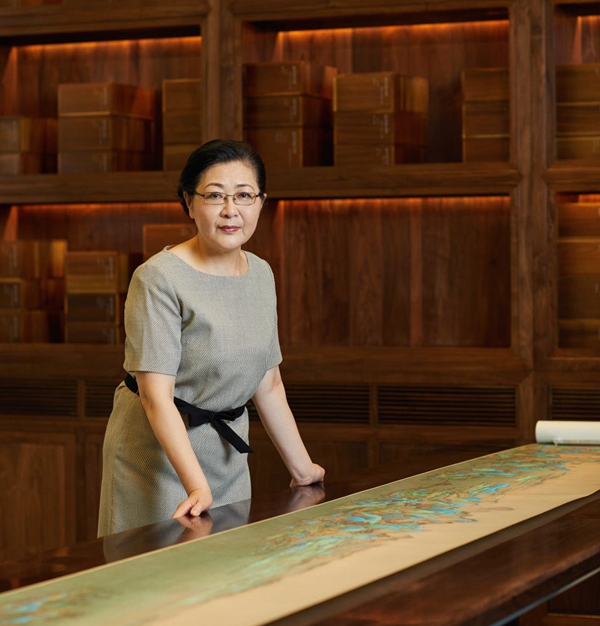Palace Museum relics chief calls for greater protection of local heritage
- By Zhang Rui
 0 Comment(s)
0 Comment(s) Print
Print E-mail China.org.cn, May 28, 2020
E-mail China.org.cn, May 28, 2020

An official from the Palace Museum presented a proposal to this year's annual session of China's top political advisory body, focusing on strengthening the management, protection and utilization of religious buildings according to the law.
Song Jirong is a member of the 13th National Committee of the Chinese People's Political Consultative Conference (CPPCC) and head of the cultural objects hospital at the Palace Museum, also known as the Forbidden City. Back in April 2019, she joined a research and survey tour of temples and churches in Zhejiang and Jiangxi provinces in east China. What she saw made her upset.
Speaking to China.org.cn, she explained coming across the damaged interior of a 300-year-old temple hall building at Fayu Temple located on Mount Putuo in Zhejiang province. The temple management asked local authorities to help repair the structure in 2016, and even offered to fund the restoration itself. Two years later, however, they still had not received a response. The local culture heritage department later replied to them that repair work could not be conducted temporarily because their application was not approved by the national culture heritage department.
"The law on the protection of cultural relics includes stipulations and provisions on the conservation of cultural relics. But when it comes to the actual management work, where responsibility lies is often unclear and the mechanism is less than perfect. This results in a lack of protection for cultural relics,” Song explained. “Whenever an incident happens, the authorities are often evasive or make excuses about the approval process higher up being incomplete, thereby delaying the conservation of national-level cultural relics."
Another instance that struck Song concerned an ancient Tang Dynasty pagoda at Nengren Temple in Jiangxi province. The temple did not have the funds to make the necessary repairs, but the pagoda was under its direct management, rather than that of the local cultural relics administration department. "This example shows us that some cultural relics under national-level protection are supervised by local cultural relics authorities. Most, however, are managed by temples or churches," she said, pointing out that it is often unclear which entity is responsible for protecting cultural relics, and that many have been in a state of disrepair for years. As such, the situation for cultural relics in many places remains grim.
Song also discovered that many temples and churches are facing financial difficulties. They are unable to protect and repair even the highest national-level relics, not to mention those under provincial and municipal-level protection. The unclear responsibility arrangements for the protection of cultural relics has also led to many problems.
In her proposal to the CPPCC National Committee this year, Song suggested that China needs to train and educate personnel working in temples and churches on the country's Cultural Relics Protection Law, and that regions should formulate a system to protect these sites according to their local conditions.
She urged the central authorities to clarify regulations and outline the main responsibilities of venues and various levels of government. Every cultural relic should have a designated person in charge, and cultural protection should be made an indicator for evaluating the government's work. In addition, a new model for cultural relic protection should be created — one which is led by the government, coordinated by relevant departments and participated in by society.
As the head of cultural objects and former vice-director of the Palace Museum, Song Jirong also promoted fiscal reform and the allocation of responsibilities for central and local governments in terms of cultural relics protection, and asked the state and local regions to establish special funds to help conserve key cultural relics.
"Society can also participate in the efforts," she continued. "The Palace Museum has created a cultural protection foundation and raised several hundred million yuan specifically for the conservation and repair of cultural heritage."
"Cultural relics are carriers of civilization and culture, and are irreplaceable treasures of mankind. Protecting them is of both practical and far-reaching historical significance for studying history, passing on culture, and enriching people's lives," Song stressed.






Go to Forum >>0 Comment(s)